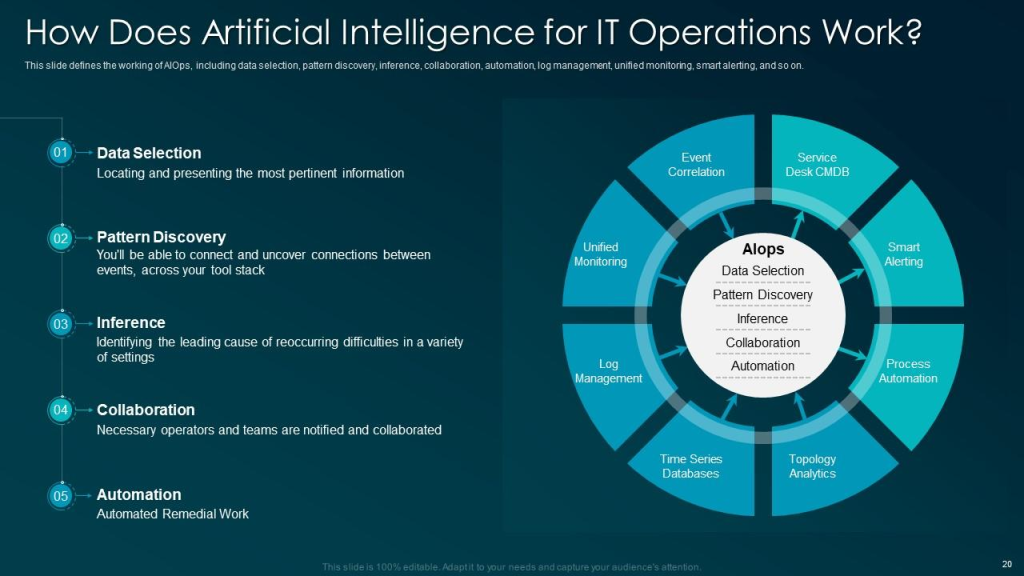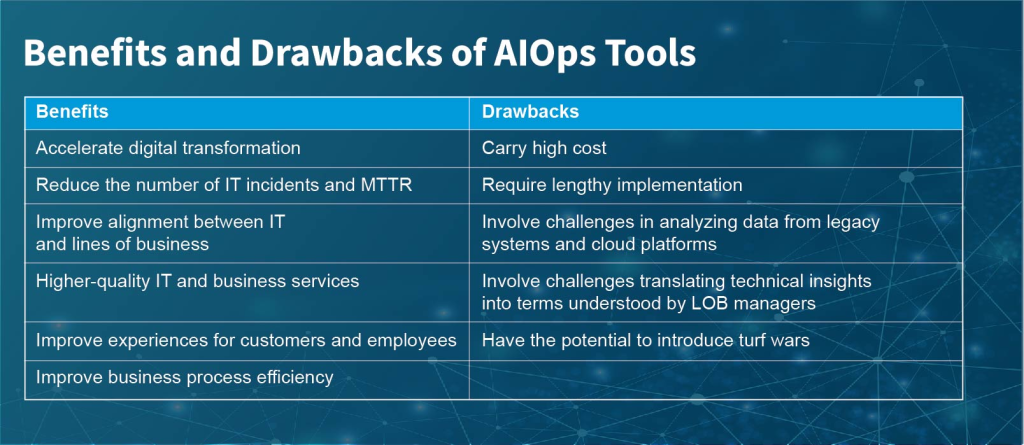Upgrade & Secure Your Future with DevOps, SRE, DevSecOps, MLOps!
We spend hours scrolling social media and waste money on things we forget, but won’t spend 30 minutes a day earning certifications that can change our lives.
Master in DevOps, SRE, DevSecOps & MLOps by DevOps School!
Learn from Guru Rajesh Kumar and double your salary in just one year.

As technology evolves, so do the ways we manage and monitor it. In recent years, we have seen a rise in AIOps tools, which are designed to help IT teams streamline their operations and improve efficiency. But what exactly are AIOps tools, and how do they work? In this article, we will explore the world of AIOps and delve into the tools that are available.
What is AIOps?
AIOps stands for Artificial Intelligence for IT Operations. It is a term used to describe the application of artificial intelligence and machine learning techniques to IT operations. The goal of AIOps is to automate and enhance IT operations, making them more efficient and effective.
AIOps tools use machine learning algorithms to analyze data from various sources, including logs, metrics, and events. They can detect patterns and anomalies in the data, which can help IT teams identify and resolve issues quickly.
How do AIOps tools work?

AIOps tools work by ingesting data from various sources, such as servers, applications, and networks. The data is then analyzed using machine learning algorithms, which can identify patterns and anomalies. This analysis can be used to detect and diagnose issues in real-time.
AIOps tools can also automate certain tasks, such as incident response and remediation. For example, if an issue is detected, an AIOps tool can automatically create a ticket and assign it to the appropriate team member for resolution.
Types of AIOps tools
There are various types of AIOps tools available, each with their own set of features and capabilities. Some of the most popular types of AIOps tools include:
Anomaly detection tools
Anomaly detection tools are designed to detect unusual patterns or behaviors in data. These tools can analyze data from various sources and alert IT teams when anomalies are detected. This can help teams identify and resolve issues before they become major problems.
Log analysis tools
Log analysis tools are designed to analyze log data from various sources, such as servers, applications, and networks. These tools can help IT teams identify and troubleshoot issues quickly by analyzing log data in real-time.
Performance monitoring tools
Performance monitoring tools are designed to monitor the performance of applications and infrastructure. These tools can provide real-time insights into performance metrics, such as CPU usage, memory usage, and network latency. This can help IT teams identify performance issues and optimize system performance.
Incident response tools
Incident response tools are designed to automate the incident response process. These tools can automatically create tickets, assign tasks, and escalate issues to the appropriate team members. This can help IT teams respond to incidents quickly and efficiently.
Benefits of AIOps tools
There are many benefits to using AIOps tools, including:

Improved efficiency
By automating certain tasks and providing real-time insights into system performance, AIOps tools can help IT teams work more efficiently.
Faster incident response times
AIOps tools can help IT teams respond to incidents quickly by automating certain tasks and providing real-time insights into system performance.
Improved system reliability
By analyzing data in real-time and detecting issues before they become major problems, AIOps tools can help improve system reliability.
Conclusion
AIOps tools are becoming increasingly popular in the world of IT operations. By using machine learning algorithms to analyze data from various sources, AIOps tools can help IT teams work more efficiently and improve system reliability. With the benefits they offer, it’s no wonder that more and more organizations are adopting AIOps tools.

Leave a Reply